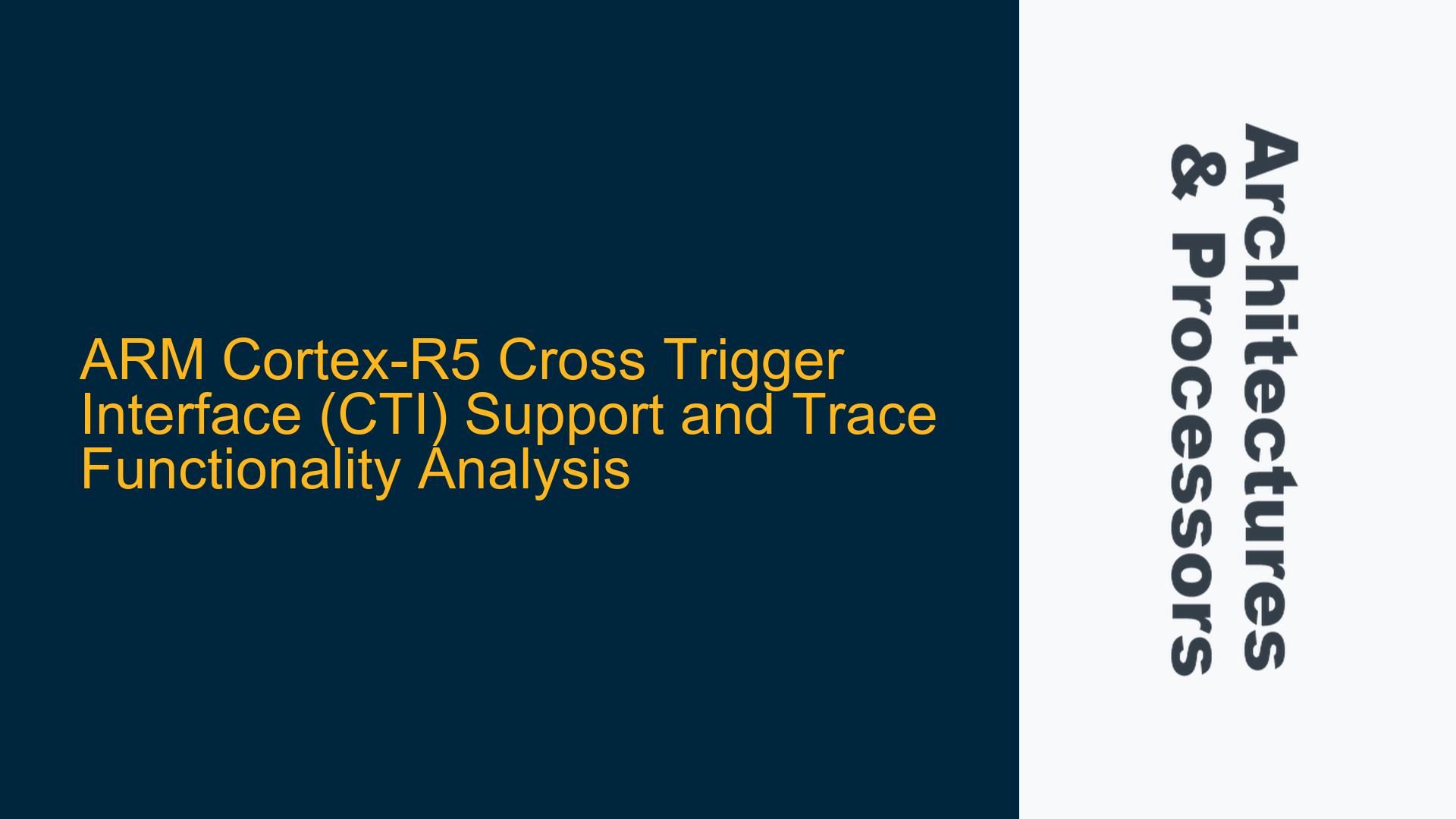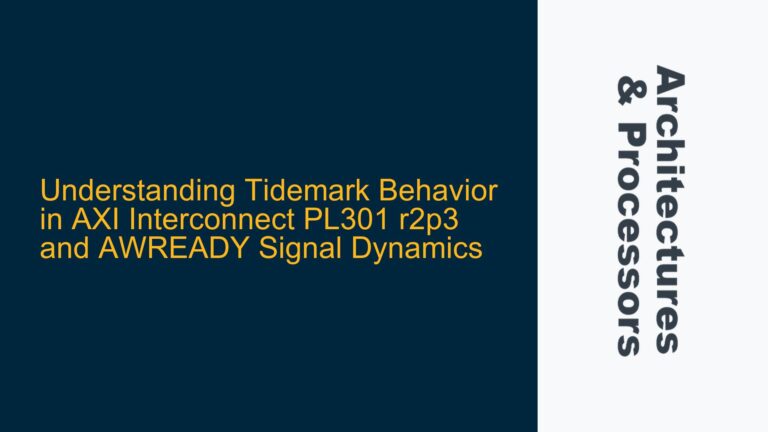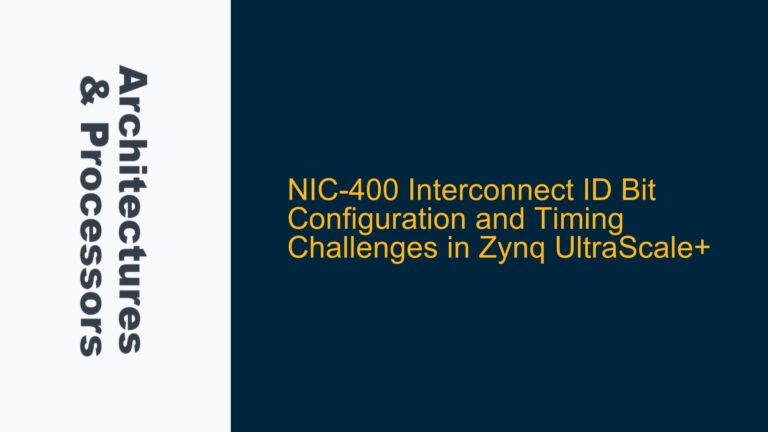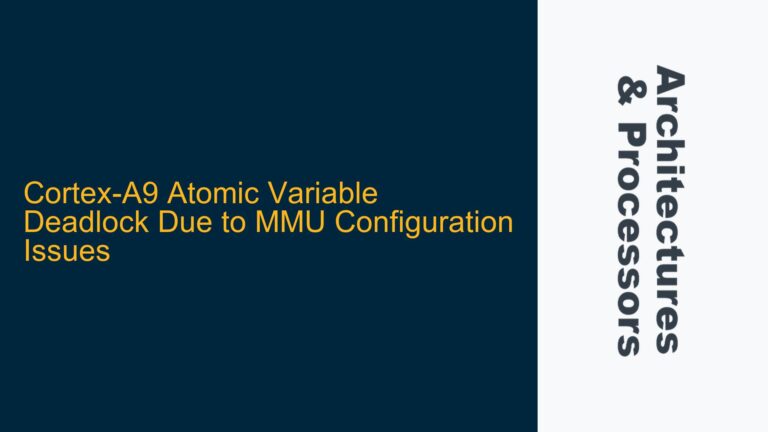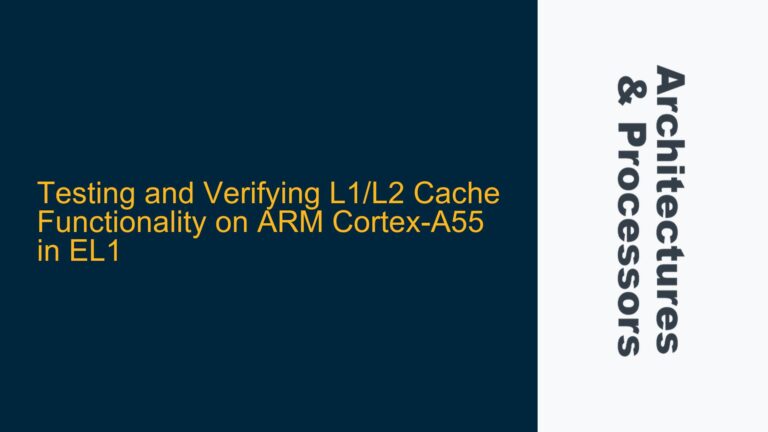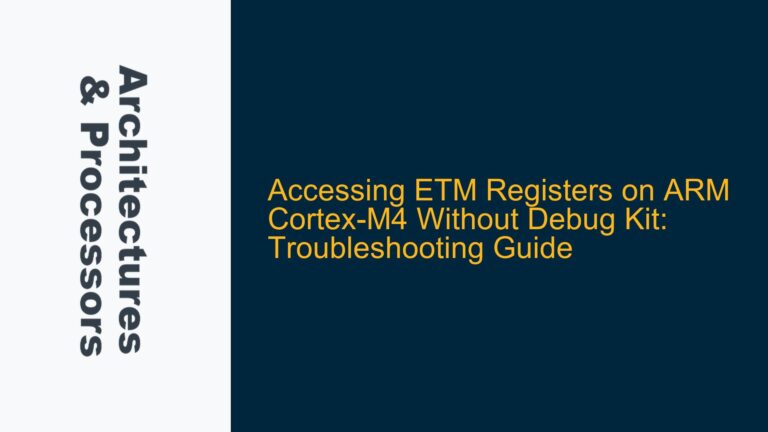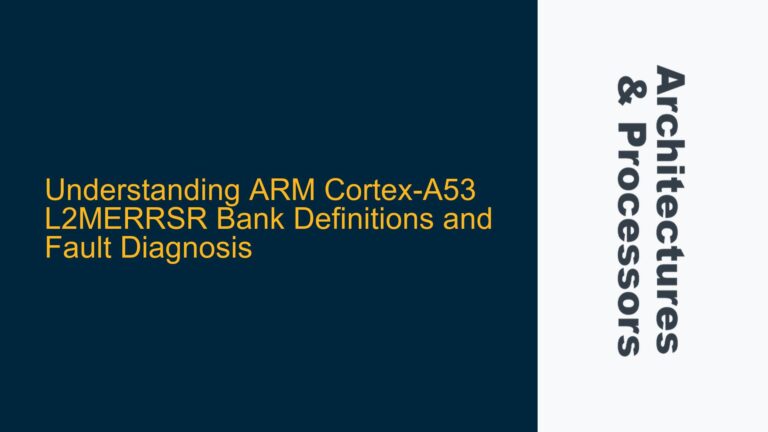ARM Cortex-R5 ETM Port and CTI Integration for Trace Functionality
The ARM Cortex-R5 processor is a high-performance, real-time embedded processor designed for applications requiring deterministic behavior and high reliability. One of its key features is the Embedded Trace Macrocell (ETM) port, which facilitates real-time instruction and data tracing for debugging and performance analysis. However, the integration of the Cross Trigger Interface (CTI) with the Cortex-R5 for advanced trace functionality is a topic that requires careful examination. The CTI is a critical component in ARM’s CoreSight debug and trace architecture, enabling cross-triggering events between different debug and trace components. This post delves into the specifics of whether the Cortex-R5 supports CTI, the implications of its integration, and how to address potential challenges in implementing trace functionality using the ETM and CTI.
The ETM port on the Cortex-R5 provides a direct interface for capturing instruction and data traces, which are essential for understanding the execution flow and diagnosing complex software issues. However, the CTI extends this capability by allowing synchronization between multiple trace and debug components, such as breakpoints, watchpoints, and other triggers. This synchronization is particularly useful in multi-core systems or systems with complex debug requirements. The question of whether the Cortex-R5 supports CTI is not just a matter of hardware compatibility but also involves understanding the architectural nuances and potential limitations of the Cortex-R5’s debug and trace infrastructure.
CTI Support in Cortex-R5: Architectural Considerations and Limitations
The Cortex-R5 processor, while robust in its real-time capabilities, does not natively include a Cross Trigger Interface (CTI) as part of its standard architecture. The CTI is typically part of ARM’s CoreSight debug and trace system, which is designed to be modular and scalable across different ARM cores. However, the Cortex-R5’s ETM port can be interfaced with external CTI components to achieve cross-triggering functionality. This requires careful design and integration at the SoC level, as the CTI must be properly connected to both the Cortex-R5’s ETM and other debug components.
One of the primary architectural considerations is the signaling mechanism between the Cortex-R5 and the CTI. The CTI relies on trigger signals to synchronize events across different components, and these signals must be accurately routed and timed to ensure proper functionality. The Cortex-R5’s ETM port provides the necessary signals for trace capture, but additional signals may be required for cross-triggering. This includes trigger inputs and outputs that connect the Cortex-R5 to the CTI and other debug components. The absence of native CTI support in the Cortex-R5 means that these signals must be implemented externally, which can introduce complexity and potential timing issues.
Another consideration is the configuration and management of the CTI. The CTI requires specific programming to define trigger conditions and responses, and this programming must be coordinated with the Cortex-R5’s debug and trace settings. This includes setting up trigger events, configuring the CTI’s channel and gate logic, and ensuring that the Cortex-R5’s ETM is properly synchronized with the CTI. The lack of native CTI support in the Cortex-R5 means that this configuration must be handled manually, which can be error-prone and time-consuming.
Implementing CTI with Cortex-R5: Debug and Trace Configuration Strategies
To implement CTI functionality with the Cortex-R5, a systematic approach is required to ensure proper integration and operation. The first step is to verify the availability of the necessary signals and interfaces on the Cortex-R5’s ETM port. This includes checking for the presence of trigger inputs and outputs, as well as ensuring that these signals can be routed to the CTI. If the Cortex-R5’s ETM port does not provide the required signals, additional hardware may be needed to generate and route these signals.
Once the hardware connections are established, the next step is to configure the CTI and Cortex-R5’s ETM for trace functionality. This involves programming the CTI’s registers to define trigger conditions and responses, and configuring the Cortex-R5’s ETM to capture the desired trace data. The CTI’s channel and gate logic must be set up to synchronize trigger events with the Cortex-R5’s execution flow, and the ETM must be configured to capture the relevant trace information. This configuration process requires a deep understanding of both the Cortex-R5’s debug architecture and the CTI’s operation, as well as careful attention to timing and synchronization.
In addition to hardware and configuration considerations, software tools play a critical role in implementing CTI functionality with the Cortex-R5. ARM’s CoreSight debug tools provide a comprehensive suite of utilities for configuring and managing the CTI and ETM, including graphical interfaces for defining trigger conditions and visualizing trace data. These tools can significantly simplify the process of setting up and debugging the CTI and ETM, but they require proper integration with the Cortex-R5’s debug infrastructure. This includes ensuring that the tools can access the Cortex-R5’s debug registers and that the CTI and ETM are properly initialized and configured.
Troubleshooting CTI Integration with Cortex-R5: Common Issues and Solutions
When integrating the CTI with the Cortex-R5, several common issues can arise that may impact the functionality and reliability of the trace system. One of the most common issues is signal integrity problems, which can result from improper routing or timing of the trigger signals between the Cortex-R5 and the CTI. These issues can manifest as missed triggers, incorrect trace data, or system instability. To address signal integrity issues, it is essential to carefully review the hardware design and ensure that the trigger signals are properly routed and terminated. This may involve using signal integrity analysis tools to identify and resolve any timing or routing issues.
Another common issue is configuration errors in the CTI or Cortex-R5’s ETM. These errors can result from incorrect programming of the CTI’s registers or misconfiguration of the ETM’s trace settings. To diagnose and resolve configuration errors, it is important to carefully review the CTI and ETM documentation and verify that all settings are correctly programmed. This may involve using debug tools to step through the configuration process and verify that the CTI and ETM are operating as expected. Additionally, it may be helpful to use simulation or emulation tools to test the configuration before deploying it on the actual hardware.
Timing and synchronization issues can also arise when integrating the CTI with the Cortex-R5. These issues can result from differences in clock domains or delays in the trigger signals, which can cause the CTI and ETM to become out of sync. To address timing and synchronization issues, it is important to carefully review the clocking architecture and ensure that the CTI and ETM are operating in the same clock domain. This may involve adjusting the clock settings or adding synchronization logic to ensure that the trigger signals are properly aligned. Additionally, it may be helpful to use timing analysis tools to identify and resolve any timing issues.
Advanced Techniques for Optimizing CTI and ETM Integration with Cortex-R5
For advanced users, there are several techniques that can be employed to optimize the integration of the CTI and ETM with the Cortex-R5. One such technique is the use of custom trigger conditions and responses, which can be defined using the CTI’s programmable logic. This allows for more precise control over the trace capture process and can help to reduce the amount of trace data generated, which can be particularly useful in systems with limited memory or bandwidth. Custom trigger conditions can be defined based on specific events or conditions in the Cortex-R5’s execution flow, and these conditions can be used to trigger trace capture or other debug actions.
Another advanced technique is the use of multi-core synchronization, which can be particularly useful in systems with multiple Cortex-R5 cores or other ARM cores. The CTI can be used to synchronize trigger events across multiple cores, allowing for coordinated trace capture and debugging. This requires careful configuration of the CTI and ETM on each core, as well as proper routing of the trigger signals between the cores. Multi-core synchronization can be particularly challenging, but it can provide significant benefits in terms of debugging and performance analysis.
Finally, the use of advanced trace compression techniques can help to optimize the amount of trace data generated by the ETM. The Cortex-R5’s ETM supports several trace compression modes, which can be used to reduce the amount of trace data without sacrificing important information. These compression modes can be configured based on the specific requirements of the application, and they can be combined with custom trigger conditions to further optimize the trace capture process. Advanced trace compression techniques require a deep understanding of the ETM’s operation and the specific requirements of the application, but they can provide significant benefits in terms of memory and bandwidth usage.
Conclusion: Achieving Reliable CTI and ETM Integration with Cortex-R5
In conclusion, while the Cortex-R5 does not natively support the Cross Trigger Interface (CTI), it is possible to integrate the CTI with the Cortex-R5’s ETM port to achieve advanced trace functionality. This requires careful hardware design, precise configuration, and thorough testing to ensure proper operation. By understanding the architectural considerations, addressing common issues, and employing advanced techniques, it is possible to achieve reliable and efficient CTI and ETM integration with the Cortex-R5. This integration can provide significant benefits in terms of debugging and performance analysis, making it a valuable addition to any Cortex-R5-based system.
